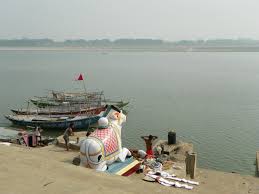
Introduction: The Significance of Varanasi
Varanasi, also known as Kashi or Benares, holds immense cultural and spiritual significance in India. Situated on the banks of the Ganges River, it is considered one of the oldest continuously inhabited cities in the world. The importance of Varanasi transcends religious boundaries, making it a hub for spirituality, art, and education. Recent events have highlighted its role as a burgeoning destination for cultural tourism in India.
A Spiritual Journey through History
With a history that dates back over 3,000 years, Varanasi is not just a city; it is a living heritage of Indian civilization. The timeless ghats (riverfront steps) that line the Ganges reflect centuries of rituals, making it a unique place for pilgrims seeking spiritual solace. The evening Ganga Aarti, a mesmerizing ritual performed at Dashashwamedh Ghat, draws numerous visitors, enhancing its status as a spiritual epicentre.
Recent Developments in Varanasi
In recent months, Varanasi has witnessed significant developments aimed at enhancing infrastructure and tourism. The city has been part of the government’s ‘Swadesh Darshan’ scheme, which focuses on promoting theme-based tourist circuits in India. Upgrades to facilities at the ghats and improved connectivity through better roads and transportation systems are attracting international attention. The restoration of ancient temples and the revival of art forms have significantly bolstered Varanasi’s tourism appeal.
Conclusion: A Bright Future for Varanasi
The future of Varanasi looks promising, especially as it continues to merge its rich heritage with modern advancements. With its unique blend of spirituality, culture, and tradition, Varanasi is set to become a vital player in India’s tourism landscape. For travellers and pilgrims alike, Varanasi offers a profound experience that permeates the soul, drawing visitors from across the globe. As awareness and accessibility grow, one can only anticipate an even brighter future for this ancient city.
You may also like

Exploring Monmouth: History, Attractions and Community

The Royal Opera House: A Jewel in London’s Cultural Landscape
